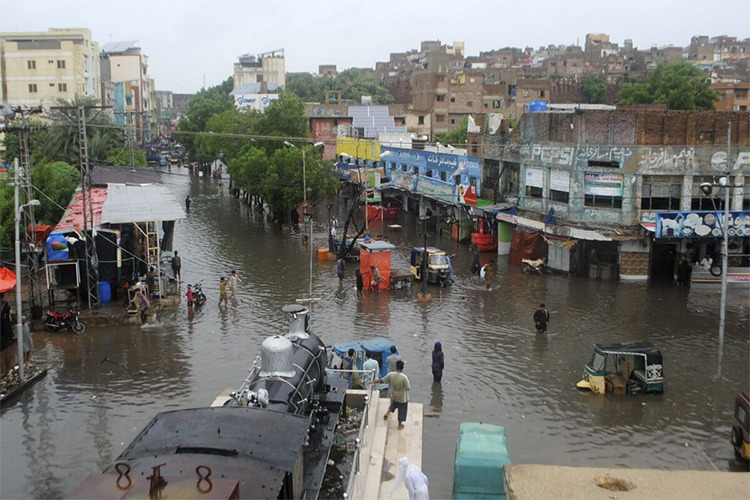
Rampant floods are tearing apart Pakistan’s towns and cities, interrupting the lives of millions. photo by Pervez Masih
Recent flooding in Pakistan has both a national and international effect.
When thinking of climate change, many think of the burning of the Amazon rainforests and widespread wildfires. The increase of bad weather patterns have been making hurricanes, typhoons, monsoons, and even droughts more extreme. The effects of climate change are here now and can only worsen. This is an international problem that will eventually affect all.
Pakistan has recently been hit by extreme floods that have flooded one third of the total landmass of 307,374 square miles, and 28,958 square miles have been severely damaged. These floods have been caused by large monsoon storms and the melting of Pakistan’s glaciers, both of which have been caused by the increase in global temperatures and climate change. The nation has experienced 15 inches of rainfall, three times the annual average. There has been a total cost of $40 billion: $36 billion in damages and estimated $16 billion in recovery cost. In order to help pay to recover costs, the United Nations has requested $816 million in humanitarian aid. This flooding has also caused Pakistan’s economy to have a deficit, increasing inflation by 27.3%.
Overall the flooding has affected about 33 million people, an amount that is approximately the size of Canada’s population. As of October, 2.1 million homes have been destroyed by the floods, further contributing to Pakistan’s national poverty problem. The delivery of funds from the international community has been delayed. As of October 12th, the nation has only received $51 million in aid from other nations, which is not nearly enough with the estimated recovery cost being $16 billion. Pakistan’s struggling economy puts it at a disadvantage; it is not able to provide the funds itself in order to fully recover. The national and local government’s response and distribution of funds have been slow. As reported by TRT World, many Pakistanis have taken it upon themselves to rebuild their homes. However, several non-profit organizations, such as the Singaporean Organization Rahmatan Lil Alamin Foundation, have helped to raise over $430,000. However, most of the money being given to Pakistan for recovery has been from the U.N. Central Emergency Response Fund and the Disasters Emergency committee.
The floods have caused a food crisis, on top of the large amounts of displacement. Approximately 73% of the nation’s economy is based on agriculture, and 4.4 million acres of farmland have been flooded, including 50% of their wheat fields. Wheat, a primary staple in Pakistan, has now all rotted due to being underwater along with Pakistan’s rice fields, which make up for 10% of global rice exports. An increase of cost is expected, both for locals and the international markets when it comes to rice and wheat. Tassawar Hussain Malik, director of Agricultural research at the Pakistan Central Cotton Committee, reports that 45% of cotton fields have been completely wiped out because of the floods. Given the slow local government response, experts predict that the water won’t be drained in time for the planting season. Animals are even being affected by the flooding. Already 1.2 million farm animals have died because of drowning and waterborne diseases. The flooding has also destroyed more than 8,000 miles of roads and damaged 410 bridges, making access to aid even more of a challenge.
Pakistan and their population of 225.5 million only make up for 1% of global CO2 emissions and they have already experienced a piece of the climate crisis. “We don’t have resources to reconstruct our homes. We are laborers. We are reconstructing our homes ourselves,” Tahir Nawaz reports to TRT World. There is a recovery plan that the national government has drafted. However, without more international help through funds and aid, officials say that it will remain just that, a plan.